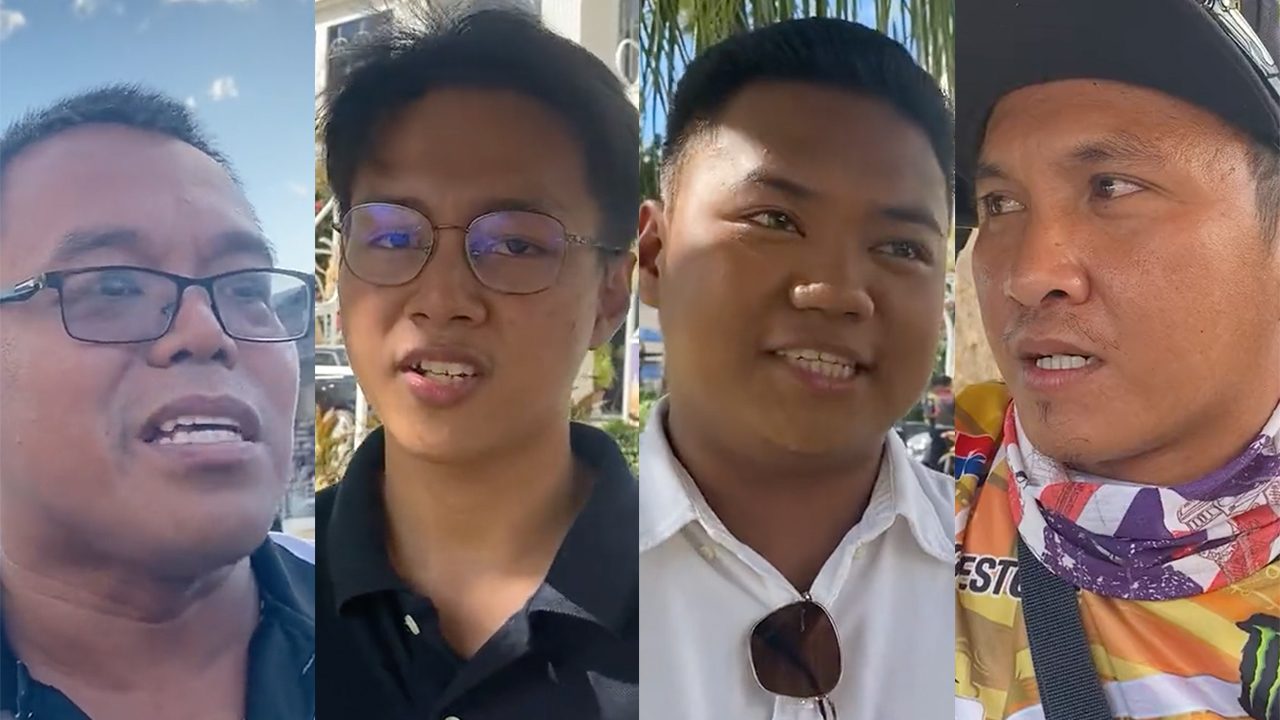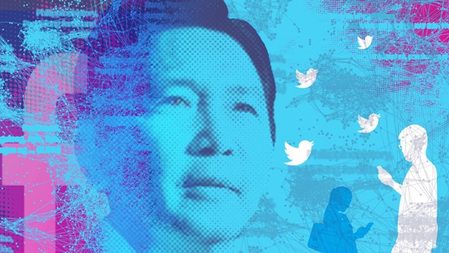SUMMARY
This is AI generated summarization, which may have errors. For context, always refer to the full article.

ILOCOS NORTE, Philippines – Thirty-seven years ago, millions of Filipinos gathered along Epifanio Delos Santos Avenue (EDSA), a major thoroughfare in Manila, for a peaceful uprising to topple dictator Ferdinand Marcos from power. But Glenn Batuyong and Francis Lopez, who were students in Marcos’ home province Ilocos Norte, didn’t feel such a revolution happening from where they were.
“Mga bata pa kami noon. Nakita namin noong mga panahon na ‘yon talagang nag-i-istruggle ‘yung mga Marcoses [during] the rise of the Aquinos. Dito sa Ilocos, ‘di ko naman alam [ang sitwasyon sa Manila] kasi wala naman social media noon,” said Batuyong, now vice president of the Vloggers Society of Ilocos Norte (VSIN). “Kami dito, basta nag-aaral lang.”
(We were just kids back then. We saw during those times that the Marcos family was struggling during the rise of the Aquinos. Here in Ilocos, I was not aware of the situation in Manila because there were no social media back then. Here, we just focused on our studies.)
“Parang hindi nag-EDSA revolution dito eh,” added Lopez, president of the group. (It was like there was no EDSA revolution here.)
By the time the senior Marcos’ term ended, 6 in every 10 Filipino families were poor, but Ilocos was one of two regions that did not experience worsening poverty during the Marcos era. According to estimates from Amnesty International, over 70,000 people were imprisoned and 34,000 tortured during Martial Law, while 3,240 were killed from 1972 to 1981.
Despite Marcos’ ouster and their family’s escape from the country, his son Ferdinand “Bongbong” Marcos Jr. managed to bring the family back to the presidential palace 36 years later, after the highly divisive May 2022 elections. Disinformation campaigns that attempted to distort the truth of the dictatorship were rampant.
Batuyong said that the EDSA People Power Revolution, which Filipinos commemorate every February 25, should simply be seen as a “part of history” and that Filipinos should focus on the present.
“EDSA revolution is a part of history already. We cannot remove it from history. No matter what they say about narratives, history, and revisionism now, it’s not a big deal because we’re here now. Let’s just deal with the [present] time. And Bongbong Marcos is the president now, right?” he said in a mix of English and Filipino.
“Hindi naman talaga natin mabubura na ‘yun eh. Para sa ‘kin is respetuhin na lang. Respect na lang kung ano ‘yung pananaw ng ibang tao, pananaw naman ng sa kabila, magkaintindihan na lang,” said Lopez, adding that 1986 was a different time.
(We cannot erase that part of our history. For me, we should just respect it. We should respect each other’s views, views of the other side, and understand each other.)
A big majority or 62% of Filipinos said the spirit of the EDSA People Power Revolution is still alive, according to a Social Weather Stations survey conducted in December 2022.
Glenn Batuyong, VP of the Vloggers Society of Ilocos Norte, says the EDSA People Power Revolution should be viewed as “a part of history,” and that Filipinos should live in the now. Francis Lopez, president, says we should respect each other’s opinions. @rapplerdotcom pic.twitter.com/h71omxNPAZ
— Michelle Abad (@michelleabad_) February 24, 2023
Rappler spoke to Batuyong and Lopez on the sidelines of the Tan-ok ni Ilocano Festival of Festivals in Laoag City, Ilocos Norte, on Friday, February 24. President Marcos, who had moved to February 24 the original February 25 holiday, chose to attend the Ilocos Norte event on the eve of the first People Power anniversary under his presidency.
Tan-ok ni Ilocano translates to “The Greatness of Ilocano,” which showcases the festivals of the 21 municipalities and two cities of Ilocos Norte. From 2011 to 2016, it was held in November, but the 2017 festival was moved to February 2018 to coincide with the province’s 200th founding anniversary.
February 2019 was the last in-person Tan-ok festival before the pandemic struck.
Weakening memory
Raymond Fuentes, a street vendor near Ilocos Norte’s provincial capitol, has only been living in the province for two and a half years but has no awareness of the People Power Revolution. Homegrown Ilocano tricycle driver Jumar Alnas said he had little knowledge of it as well.
But the People Power Revolution was not Manila-centric – Filipinos from all over the archipelago converged in the streets in the four-day uprising to call for Marcos Sr.’s peaceful descent from power.
When asked if the older Marcos deserved to be ousted from power, Alnas said, “Ti ammok nga kwa dijay ket kasla dagijay. Nagprotesta ket han nga siguro maka-Marcos dagiijay kasi diak ammo a nu agpasy dijay nabuyak nga Aquino nga supporter dagijay nagprotesta.“
(I think those who protested against him were probably anti-Marcos. I watched something, but I don’t know if it’s true that those who joined the protest were Aquino supporters.)
The over two million people who joined the EDSA revolution included civilians, political and military groups, and religious groups.
Both Fuentes and Alnas voted for Marcos Jr. in the 2022 elections. They said they believed in his character and capabilities. Alnas said he grew to support the Marcos family after watching content about them on Facebook and YouTube.
Meanwhile, 21-year-old street vendor Isabel (not her real name) said that EDSA highlighted the voice of Filipinos.
“For me, it’s a representation of hearing the voices of people and not to repeat [the history] that has been made,” she said.
Not just a holiday
Ilocano students Angelo Jay Pedro and Ryand Ugalde wanted Filipinos to remember the historical significance of the bloodless revolution.
“We should not limit EDSA to a mere holiday or non-working day. EDSA is not also about memorizing dates. EDSA is a remembrance of the power of people, in terms of ousting a tyrant, ousting people in power who are abusive,” said Pedro, a senior high school student.
College student Ugalde said that EDSA reflects how Filipinos are as a people. “Just imagine, millions of people gathering in one avenue to protect and to preserve democracy,” he said.
“I think it’s time for us Filipinos, in this setting, na (who are) Ilocanos, to have time to reflect on what happened 37 years ago. And now that another Marcos is a president again, I think…we should not forget that, and we have to continue to recognize the importance of that because, if not for the people 37 years ago, we might not even have democracy until now,” Ugalde said in a mix of English and Filipino.
On Saturday morning, February 25, Marcos looked back on the EDSA revolution as an event that “divided” Filipinos. He offered a “hand of reconciliation.”
“As we look back to a time in our history that divided the Filipino people, I am one with the nation in remembering those times of tribulation and how we came out of them united and stronger as a nation,” he said.
“I once again offer my hand of reconciliation to those with different political persuasions to come together as one in forging a better society – one that will pursue progress and peace and a better life for all Filipinos,” the President added. – Rappler.com
Add a comment
How does this make you feel?










There are no comments yet. Add your comment to start the conversation.